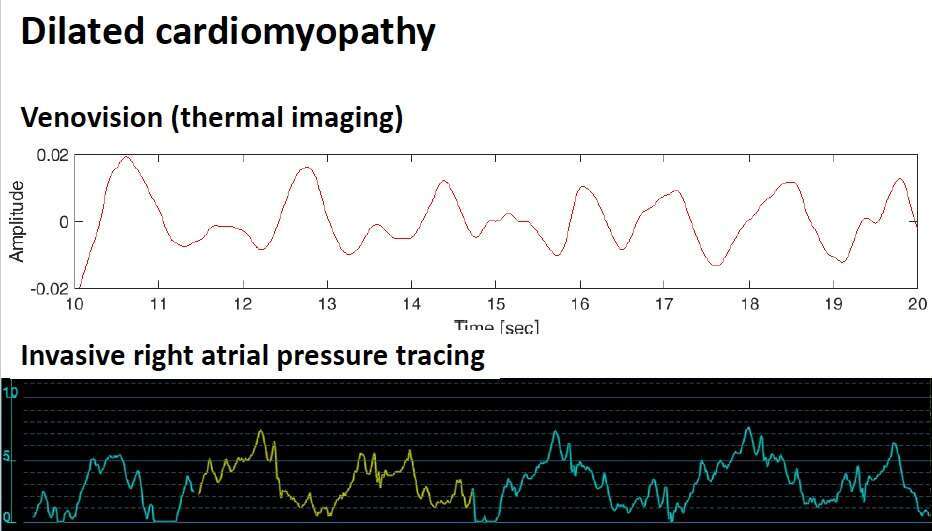
Thermal Imaging for Non-Invasive Evaluation of Jugular Venous Pressure and Waveform
Jugular vein pressure (JVP) is a key sign in heart failure evaluation. However, its use is limited by the difficulty and imprecision of clinical evaluation and limited utilization of invasive measurement. Here we evaluated a novel thermal imaging technology (VenoVision) that enables the non-invasive assessment of patients hemodynamics by detecting the jugular venous pulse and waveform. Venovision readout and blinded physician JVP assessment were compared with right atrial (RA) pressure recording from invasive hemodynamic study. Linear correlations were evaluated between parameters.
Fifteen patients were evaluated (mean age 60 years 47% female) were included in the clinical study. Indication for hemodynamic evaluation was heart failure in 67% and pulmonary hypertension in 33%. Invasive mean RA pressure was on average 10.1mmHg (range 6-20). Peak RA pressure (the highest pressure recorded) average was 14.3mmHg (range 6-24). Correlations with mean RA was R2=0.01 for visual evaluation and R2=0.75 for VenoVision. Correlation with peak RA pressure was R2=0.10 for visual and R2=0.77 for VenoVision. An example of VenoVision waveform in comparison with pressure tracing is illustrated in the figure.
In conclusion: VenoVision thermal imaging is superior to visual evaluation of RA pressure. Both visual and thermal jugular evaluation correlate better with peak RA pressure.
Powered by Eventact EMS